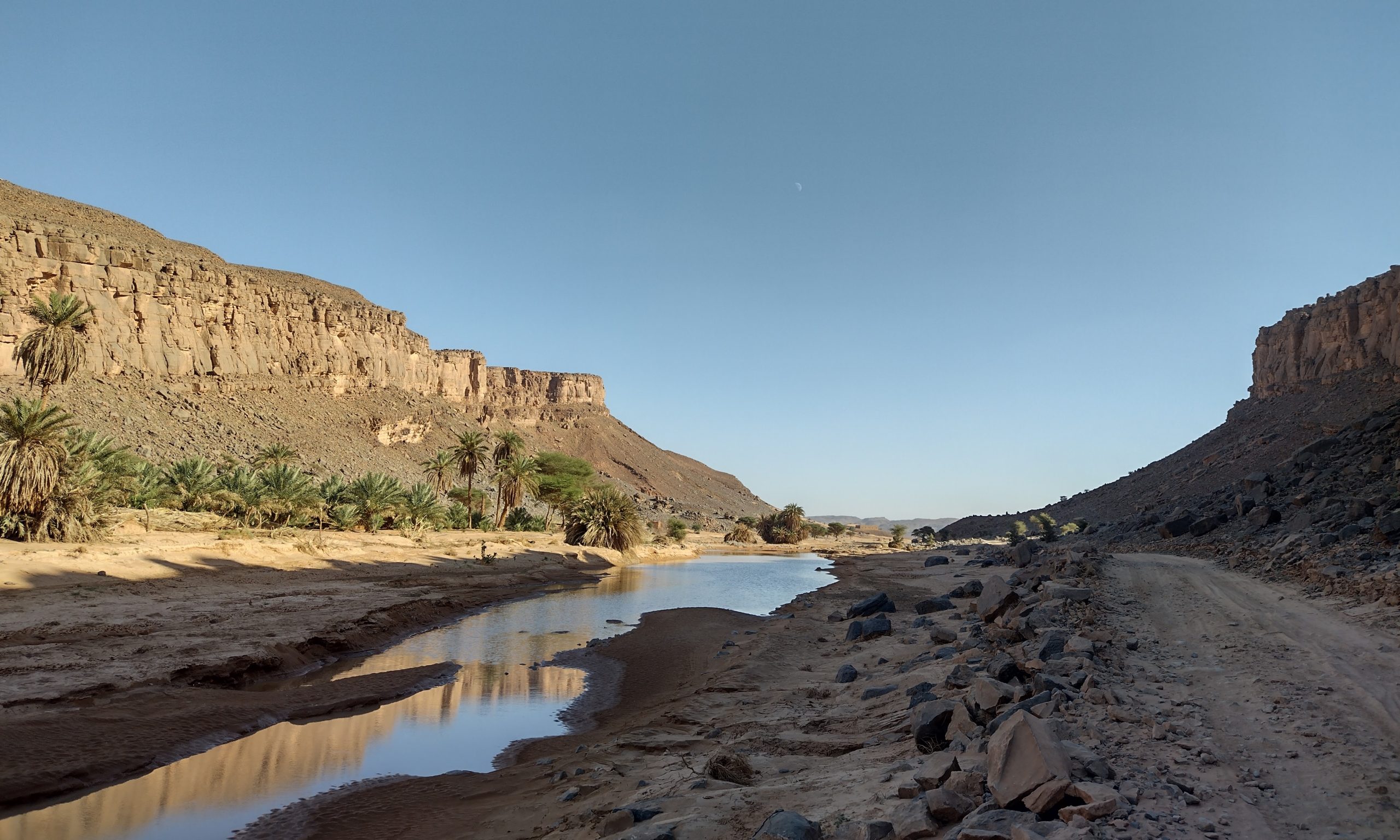Sultry doesn’t quite cover it.
We spend the days praying for a breeze. Not wind – which would bring choking dust and obliterating sand, beneficial for neither painting nor body – just a gentle rustle, enough to ruffle the tips of the palm fronds, and perhaps keep the flies at bay. It’s the date harvest, of course, so any attempts to outwit them are futile; this is their moment, and buzz all over us they must.
I have never known it so hot here, in October. Likewise in the Canary Islands; even on the top of Garajonay, the highest point in La Gomera, we sweated in shorts, where in March we shivered in waterproofs. On Lanzarote, an hour’s walk soaked me to the skin in the way a steamy rainforest might. Yet here, in M’Harech, a tiny oasis in southeast Morocco not even a dot on the map, it rained so hard a month ago that the adobe auberge was almost submerged, and there are still remnants of a lake where sand should be. It’s difficult to imagine, now.
It began to rain in the Dolomites just before we left. This is not unusual for September, but the deluge continued on, and on, and not only in Alta Badia; I heard reports of serious, and very unseasonal, flooding all over southern Europe.
But if the weather has gone crazy, tourism is undeterred. Here I am with a small group of painters on an artists’ ‘retreat’, although what we are retreating from is mostly the heat. And the flies. This place, which was a haven for me while I was living in Erfoud – back then, they served dinner by the light of oil lamps, and their three simple rooms shared outside bathrooms with cold showers – has become quite the stopping-off point, it seems, for huge groups of bikers and cyclists. Of course, it sits right on what was the Paris to Dakar rally route, so has always drawn intrepid adventurers passing by and, occasionally, staying for the night. I’ve brought painters here many times over the last decade or so, and met a handful of interesting people, along with the odd rowdy group. But I can honestly say this is the busiest I’ve ever known it, as well as the hottest. I simply can’t imagine cycling through burning sand for eight hours a day across shadeless plains. Alta Badia, too, was much more crowded than I remember it being – out of season – than it was ten years ago. All this begs the question: why?
The simplest conclusion would be that many Europeans have a greater disposable income, despite wails to the contrary. It could be that, perhaps after Covid, people are disposing of that income on holidays in a way they may not have done previously. Travel has not become more affordable; far from it. Jane believes it’s a result of the ongoing genocide perpetrated by Israel, rendering much of the Middle East and North Africa out of bounds, and she may well have a point. Morocco, thus far, appears blissfully untouched by such things and I have not yet heard it discussed.
My own theory, which I struggle to unsee, is that the human population of the entire world has increased exponentially in the last few years. A mathmatician would be able to explain how, when numbers reach a certain level, they become unstoppable. Like a giant explosion, I suppose. I fear we have passed that point. There are far more people travelling everywhere – because there are far more people. Next year there will be far more still, until the planet collapses under the weight of overconsumption, exploitation and degredation, assuming we don’t blow ourselves up, first.
Every single human alive today plays their part. But those of us in the West, who can afford to amuse themselves, and travel, for leisure, have a significantly higher impact than most. I am singlehandedly responsible for bringing four others here, and increasing the naturally-resident population of this oasis by around 30%. We bring income; we deplete water. This, at least, is not so much of an issue while the lake remains. Thinking about it, that might solve our overheating problem, too; while we wait for the breeze, and the arrival of the next convoy of motorbikes, rally cars and dune buggies to shatter the peace we have sought.
